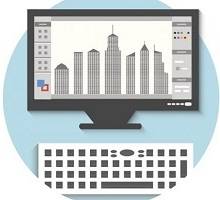April 11, 2014
Database of green buildings to help designers reduce carbon emissions
The first free and publicly available resource for building professionals to access detailed comparative data on carbon in buildings has been launched today. Commissioned by resource efficiency experts WRAP in collaboration with the UK Green Building Council; the Embodied Carbon Database will allow building professionals to benchmark their designs to a far greater extent and help assist them in identifying where carbon reductions can be made. The database has been created in the context of the joint government and industry ambition to reduce emissions associated with the construction industry by 50 per cent by 2025. It’s intended to help organisations meet this ambition by providing a source of data which people from across the whole supply chain, including engineers, architects and quantity surveyors, can use it to benchmark green building designs and as a result, assist in identifying where carbon reductions can be made.
Arup assisted in its development by coordinating data input from across the construction industry including building owners/developers, trade bodies, other design firms and cost and carbon consultants, to improve the benchmarking of data.
The resulting information in the database has been collated and presented in a clear, comprehensive and standards compliant way to allow project teams to gain an understanding of the typical embodied carbon footprint of different building types.
Gareth Brown, Programme Area Manager at WRAP, said: “Our aim is to create an open, web-based resource for building professionals which will have a real impact in driving down carbon emissions.
“The resource efficiency that the database will enable brings with it truly measurable gains to the economy as well as long term benefits to the environment.”
Click here to use the embodied carbon database.

























